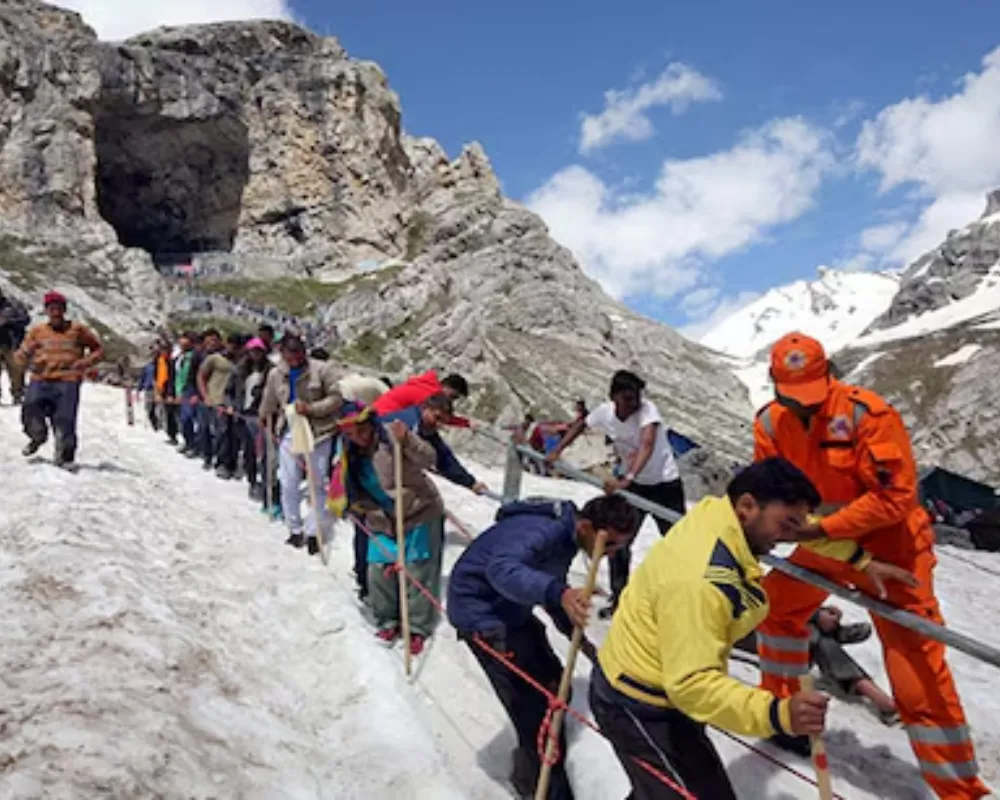Description: The Amarnath Yatra 2025 is in full swing, with over 2.2 lakh pilgrims completing darshan. Despite a shrinking Shivling due to heat, robust 'Operation SHIVA 2025' ensures safety on both routes.
 Manish Saini
Manish Saini

The sacred annual Amarnath Yatra to the holy cave shrine in the south Kashmir Himalayas is well underway for 2025. Since its commencement on July 3, the pilgrimage has seen an enthusiastic turnout, with over 2.2 lakh devotees already having performed darshan of the naturally formed ice Shivling as of July 15, 2025. The 38-day pilgrimage is scheduled to conclude on August 9, coinciding with the Raksha Bandhan festival.
Security arrangements for the Yatra are exceptionally tight this year, with the Indian Army having launched 'Operation SHIVA 2025'. This comprehensive security mission involves the deployment of over 8,500 troops, alongside advanced surveillance and combat technology. All transit camps, base camps (Nunwan-Pahalgam and Baltal), and the entire route from Bhagwati Nagar Yatri Niwas in Jammu to the holy cave shrine are secured by a multi-layered counter-terror grid.
The Kashmir Police Chief V.K. Birdi confirmed that multi-layered and in-depth security arrangements are in place, with drills conducted across various locations to refine alertness and preparedness. Measures include counter-unmanned aerial systems (C-UAS) to prevent drone threats, continuous drone surveillance, and high-resolution cameras tracking pilgrim convoys. Quick Reaction Teams (QRTs) are also on standby for any emergencies.
Lieutenant Governor Manoj Sinha, who also chairs the Shri Amarnath Shrine Board (SASB), flagged off the first batch of pilgrims from Jammu on July 3. Over 3.3 lakh devotees had registered for the pilgrimage even before its start, highlighting the immense faith and devotion. A daily limit of 15,000 pilgrims per day has been set for safety and crowd management, ensuring an organized flow of devotees.
Pilgrims are undertaking the challenging trek via two primary routes: the traditional 48-km Nunwan-Pahalgam route in Anantnag district, which typically takes 3-5 days, and the shorter, steeper 14-km Baltal route in Ganderbal district, usually completed in 1-2 days. Helicopter services are also available for those unable to undertake the arduous trek.
However, the Yatra is also facing the effects of the prevailing weather conditions in the Kashmir valley. Reports indicate that the naturally formed ice Shivling, which represents Lord Shiva, appears to be melting faster than usual due to a heatwave and rising temperatures. Previously standing at 12 to 15 feet tall, the Shivling is reportedly now only about one and a half to two feet in height. Despite this, pilgrims continue their journey with unwavering enthusiasm, chanting devotional hymns as they trek towards the cave. The SASB and local authorities are continuously monitoring the weather to ensure pilgrim safety.
Pilgrims are reminded of the mandatory requirements for the Yatra:
Along both routes, facilities such as weather-resistant tents, huts, medical posts every 2 km, oxygen booths, and langars (free food kiosks) provided by various government depots and NGOs are available to ensure the well-being of the devotees. The Army has also set up a 100-bed hospital and deployed over 150 medical staff.
The Amarnath Yatra 2025 continues to be a testament to faith and resilience, with pilgrims braving the Himalayan terrain and changing weather conditions to seek blessings at the holy cave. The coordinated efforts of security forces and administrative bodies are ensuring a safe and spiritual journey for the hundreds of thousands of devotees.






Sign up for the Daily newsletter to get your biggest stories, handpicked for you each day.
 Trending Now! in last 24hrs
Trending Now! in last 24hrs